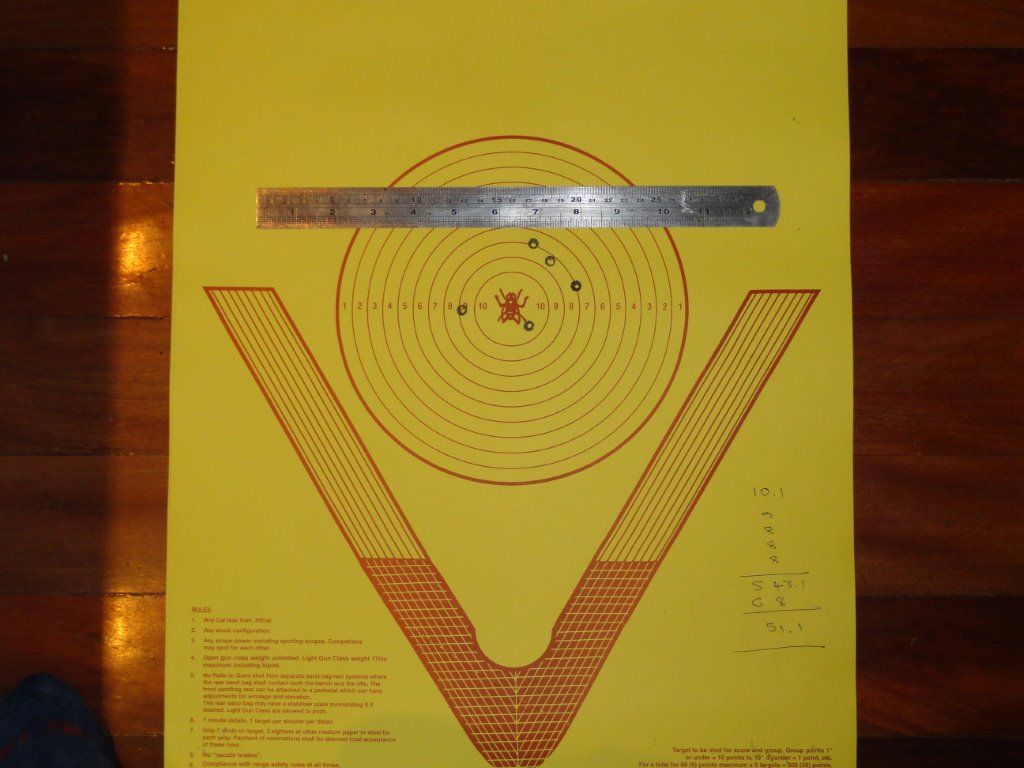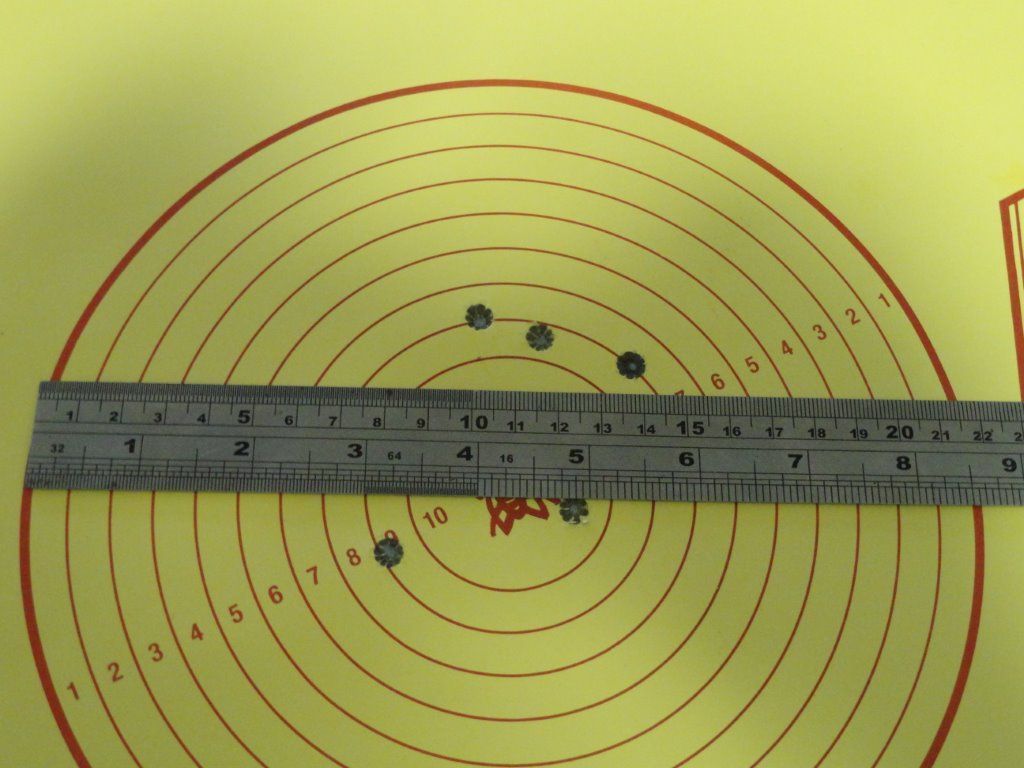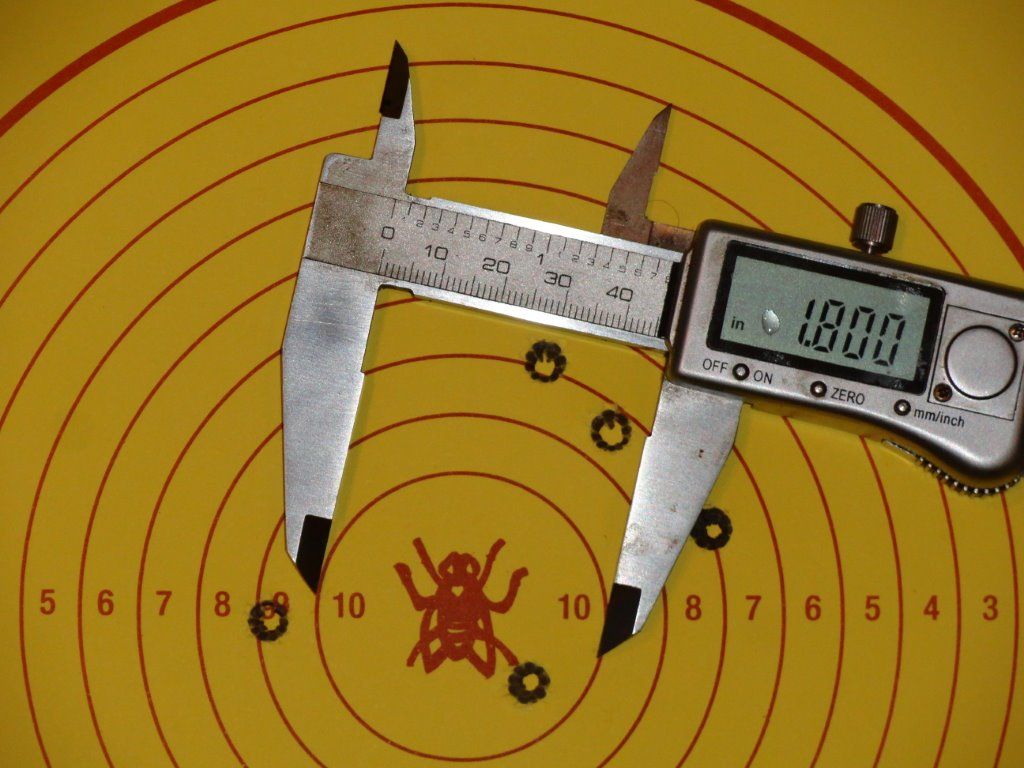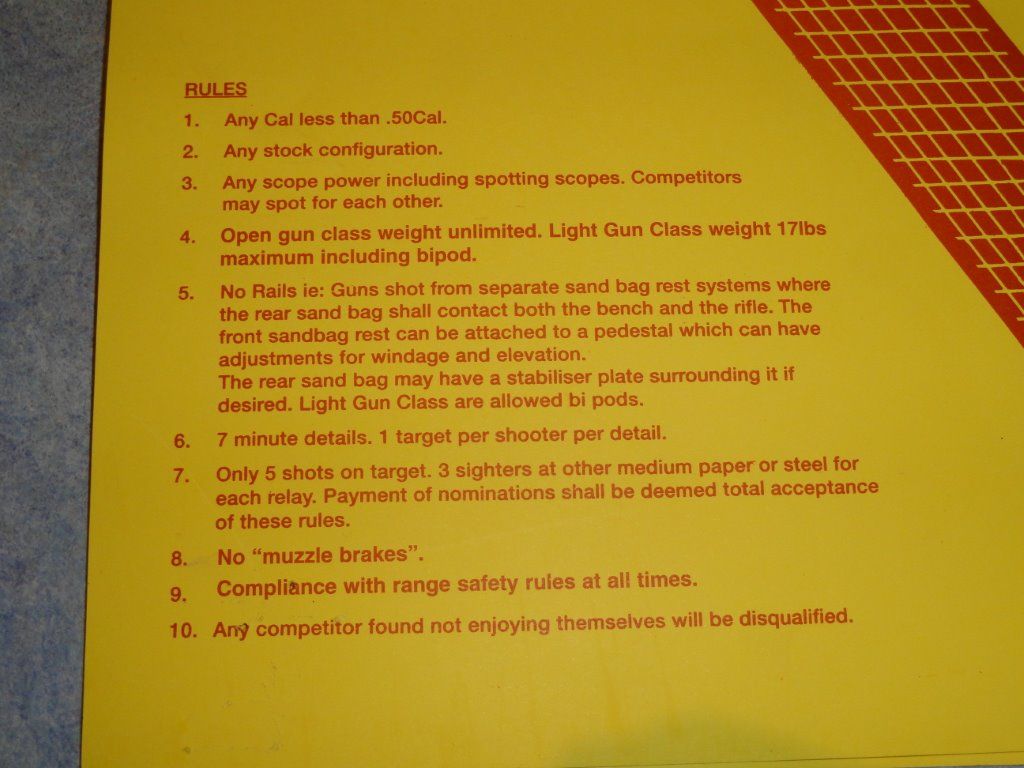Bartman,
The whole sheet of paper that makes up the
SSAA Fly Target is 16.5" x 23.5"as per below

I am pretty sure that Stuart & Annie Elliott from BRT were involved in the design of the target, and the
big V lets you shoot through less than perfect sighting conditions, because you can easily use it to centre most Reticles.....just line up the bottom line central on the bottom of the big "V", with the crossbar across the top of the V using the scoring rings to verify, and you have to be centred. Its surprising how well that works
The "Scoring Rings" are near enough to 8.5" across , so 4.25" from edge of 1 ring, to fly centre The 10 Ring with the fly in the centre is 1.8" across
The 10 Ring with the fly in the centre is 1.8" across
This one counted as my very first "Fly", even though it barely touched him ! If you hit the fly it is scored as a 10.1, so this particular target scored three x 8's, one x 9, and one x 10.1 so 43.1 for "ring" score.
Then to that, they add a further score for "Group". I think it works that for 1" or under you get a 10, for 1"-2" group its 9, for 2"-3" group its an 8, etc etc.
This particular group was just under 3", so my final score on this "detail" was 43.1 + 8 = 51.1
The Rules are printed on the target
with Rule # 10 being strictly enforced


Each "Target Lane" at Belmont has a big "Lane Number". There are two targets, above Left and above Right over the top of the lane number
At Belmont, the left hand target is on a PINK background corflute, and is for Light Gun, whilst the right hand target is on a black background and is for Heavy Gun.
Underneath the lane number is a steel splash plate, approx 550mm wide X 450mm high sprayed white
They do things this way because they are sharing the "range", shooting with short range BR right beside the 500 meter range. So the first (LG) detail has to shoot the "pink" target in the first detail, then the second (HG) detail shoots at their black target. Then the whole range (100-200m BR plus 500m Fly) stops shooting , and the scoring crew races up, replaces both targets with new ones, re sprays the white "splash plate", so we can all do our next (of 5) detail.
You start with 10 mins unlimited shots, on the splash plate to get on, and onto your "practise target" whenever you are ready.
it was quite surprising how many shooters couldnt "get on", so to help them, on a bare earth bank just to the right of the target frames they place three flouro clay targets in the dirt. If necessary a shooter can fire at one of these, and the fall of shot is fairly easily seen.
When the practise detail is over,for both LG then HG, its time to get serious.
You have to display 8 rounds on your bench for the RO to see. Then the 7 minute timer starts. You must shoot 5 at the target, but can start with 1-3 shots at the sighter plate.....whatever you want....most use all three.....then shoot the scoring shots.
The only thing that's possibly any issue at Belmont is that the HG detail that shoots immediately after the LG has to use a splash plate that has already had 1-3 (mostly 3 !) shots already fired onto it. Apparently they have some days where you cant see bullet holes on the target, but on my first crack at it the other day there certainly wasnt any issue through my March scope.
When its all over, you can take your own targets home (who else would want them !.....saves on rubbish)
It is hard to imagine that any competitive F Class shooter wont also do well at Fly Shooting, straight up.
I am hooked after my first attempt...........same as F Class got me, first time

PS : I wish someone had explained it to me fully before it started. I didnt have a bloody clue how it actually worked, and being LG was in the first detail. Ol' mate calls " starting now" and 25 blokes open up at steel, dirt banks etc and all i can see is a huge bank of 50 targets on 25 lanes and no damn idea re what i should actually do next ! Thankfully i had an F Classer mate either side, in Lindsay Schneider and Mark Fairbairn, and they didnt mind stopping to explain to a newbie like me how i should go about it











